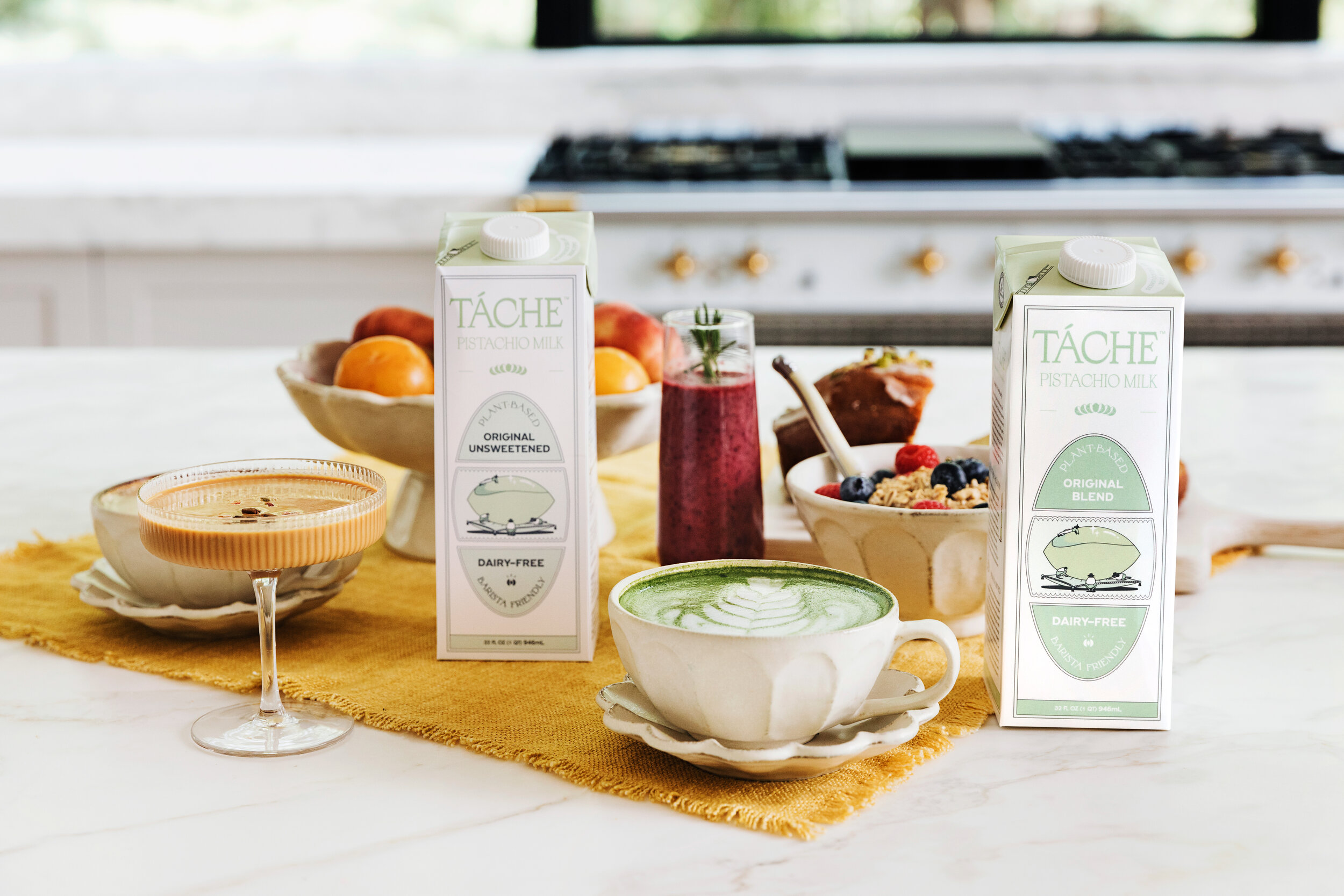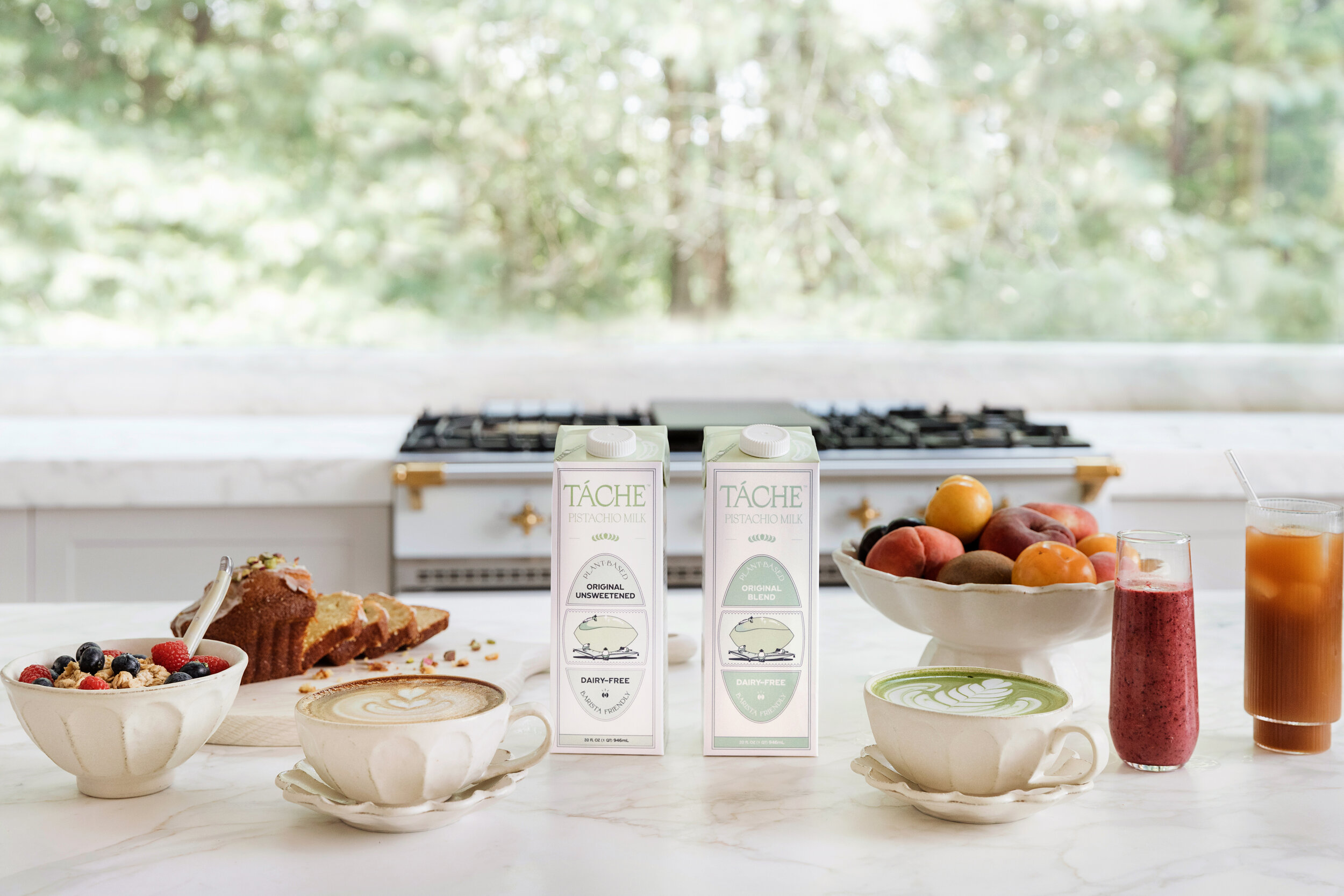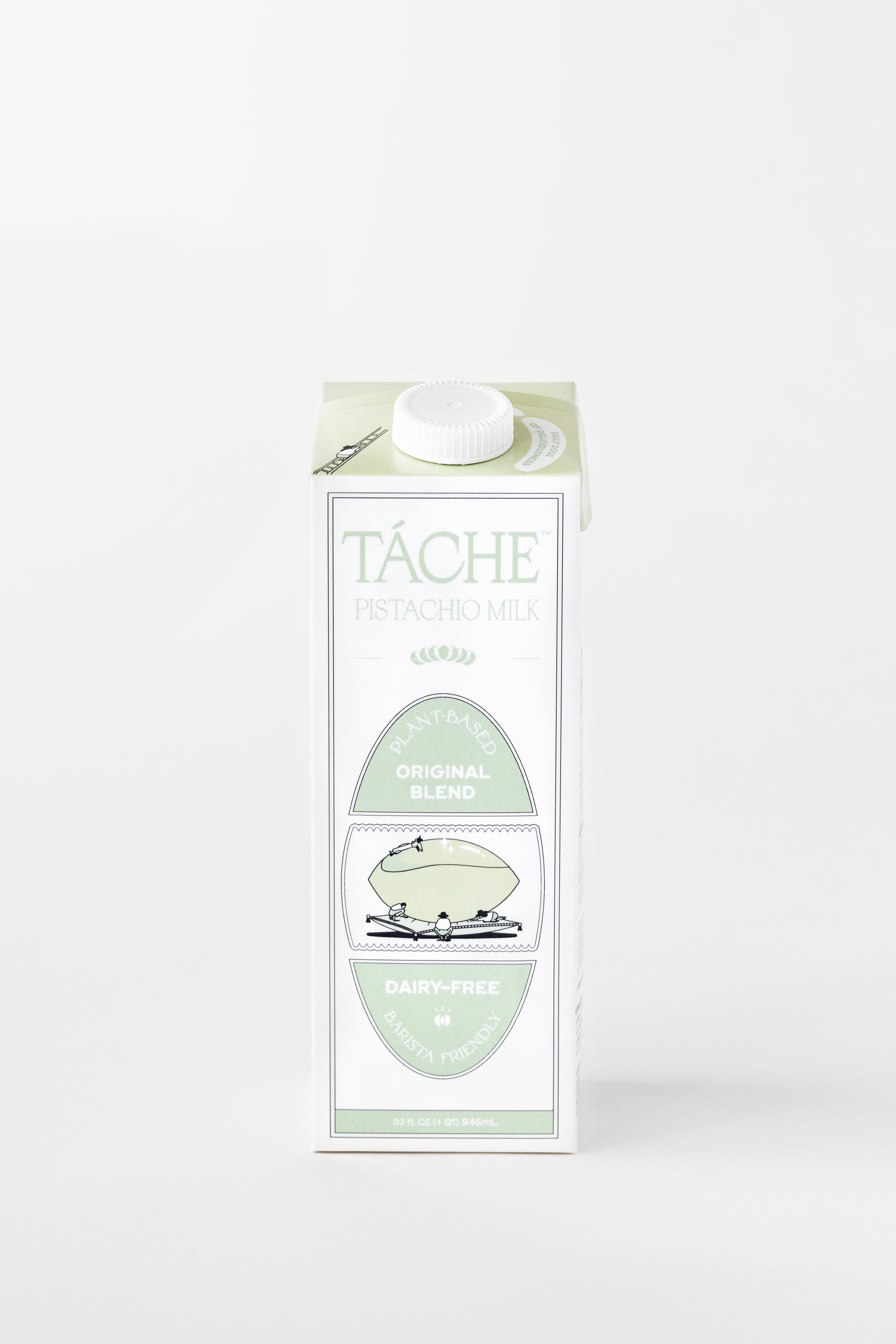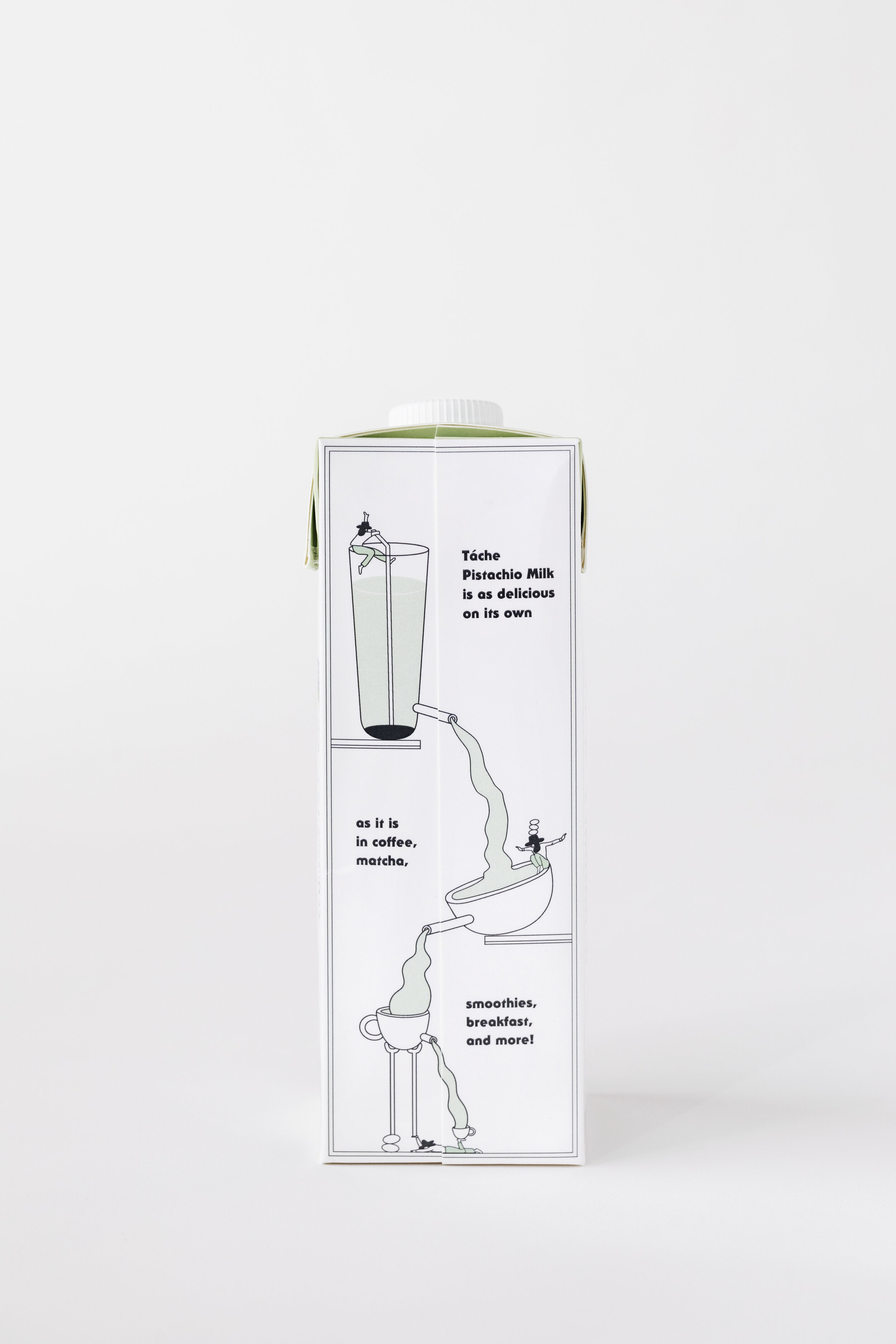COSME, SANTIAGO PEREZ: Mexican Cuisine With a Contemporary Twist
When you think of where to find the best Mexican food, you may not think of New York City. However, Santiago Perez and his business partner sought to change that. Since launching Cosme in 2014, Santiago has created multiple modern havens of some of the finest Mexican food and culinary experiences to have ever arrived in New York City.
When you think of where to find the best Mexican food, you may not think of New York City. However, Santiago Perez and his business partner sought to change that. Since launching Cosme in 2014, Santiago has created multiple modern havens of some of the finest Mexican food and culinary experiences to have ever arrived in New York City.
Founder, Santiago Perez was always involved in hospitality one way or another since his younger days. In middle school, he started multiple tacos stands a year and sold tacos to his friends, which then carried over into him throwing eventful high school parties, and thus quickly learned that bringing people together really brought him joy and could be a full-time job. Although he studied chemical and industrial engineering in college and worked as a banker, he realized his true passion was culinary arts specific to his Mexican heritage.
Founder, Santiago Perez above.
The Aha Moment
Born and raised in Mexico City with four siblings, Santiago grew up hosting a plethora of events for many friends, family members, etc., at least multiple times a week. Hospitality is second nature to him and what really started the company was his “passion for hospitality and making other people happy.” The Aha moment of Cosme came to him when he was in New York City with some friends at a famous Italian restaurant downtown, post a karaoke party. After a couple of drinks, Santiago started chatting with the waitstaff and bartenders, and they all said the same thing -- there was no good, authentic Mexican food that was also fused with modern elements. Santiago went home and furiously researched, noticing there was indeed a gap in the market for real, authentic Mexican food that could be categorized as upscale.
“I saw many different elements of my Mexican heritage heavily misrepresented in the U.S., primarily in culinary, interior design, and hospitality. By putting all these different elements under one roof, Cosme was born.” - Santiago
Having grown up in Mexico City and having seen quality there for a smaller price point, Santiago knew this was a hurdle he had to overcome in order to build a reputable brand in New York City. He knew he couldn’t do this alone so he started thinking about famous chefs from his home country, and renowned Mexican chef Enrique Olvera came to mind. Enrique is considered a top chef in Mexico and partnering with him would be a dream come true, although Santiago knew it would be difficult to connect, he never gave up. Santiago showed up to Enrique’s flagship restaurant in Mexico City with a full presentation deck with even his face on the cover to hold his attention and developed rapport within a few meetings and a few bottles of mezcal.
“We shared the same vision and got along really well, so over time we realized we wanted to work together.”
After securing real estate space, the team stayed laser-focused on their vision and mission of bringing elevated Mexican cuisine to the public. When asked about marketing campaigns or investing in PR, Santiago said, “We believe the best marketing that we can do is word of mouth. If you focus on yourself, you perform better. So, focusing on our product and making sure we can execute at the highest quality will do the marketing itself. That is what we believe is more powerful than any alliance or influencer or celebrity.” However, Santiago also recalled that validation from one of the biggest celebrities from our time helped him confirm that bringing his vision to the U.S. was a real success. A few years ago, Barack and Michelle Obama and their team wanted to dine at his restaurant and insisted on dining at Cosme. Santiago and his team remembered making exceptions in the private dining room for the former President and First Lady, and ensured that they were well taken care of...as he does for all of his guests who dine at his restaurants.
Damian Restaurant above.
“We believe in sharing our Mexican identity with pride. In order to do this, we cannot compromise on our values. We are always pushing for what is authentic and what represents our Mexican culture best.”
Ever since Cosme was born, Santiago and Enrique have slowly grown the brand by adding new restaurants and working most recently in the consumer products goods category to launch their own line of salsas. The team also owns the famous restaurant, Atla in trendy Noho, and in LA, they recently opened Damien which is a sibling to Cosme, and plan to build three more Atla’s in LA. Wohoo!
Damian Restaurant above.
The Challenges
Cosme was born in 2012 and did not officially open its doors until 2014, but faced many obstacles and challenges along the way, specific to real estate. Santiago remembered trying to find a very large space with a kitchen and no landlord would take them. The team finally found something, but low and behold it was a crumbling, old strip club space. A big hurdle of this was that there were still remnants of the previous tenant scattered in the space and the kitchen had no gas. Ultimately it was sticking with their vision and creating something that we would be really proud of, that we knew wouldn’t exist anywhere outside of Mexico. The team all jumped in to make sure with the time and budget they had, they could translate their vision into reality, and really make the space their own with a sleek design and a lot of lighting and vegetation.
Fast forward to the present day, COVID has presented its own unique set of challenges for any restaurant owner. As places shuttered, the team figured out how to shift their resources and energy to really reassess their long-term goals. “Our idea for consumer packaged goods came to life -- it is still in the early stages, and we don’t have the product yet, but we took time to really understand how fragile restaurants are in external environments, and in order to scale, we have to build new stores and products to get a much broader audience. COVID really enabled us to think outside of the box and outside of the four walls of the restaurant and outside of just the restaurant brand.”
The Advice
Launching any business, especially a restaurant, takes a lot of effort and time, but most importantly, it takes a strong commitment to a clear vision. Santiago shares some of his learnings as a founder in the competitive hospitality industry:
“In the early stage, you need to have a lot of conviction of what you want to do because especially in the early stage there will be so many nos, people that challenge your vision, thoughts about more capital, and you really need to convince yourself you can push forward with your idea. Take care of yourself, or else it will be very difficult to show up and tackle your idea.”
“You should have a very clear vision of how your idea will be different from others. Surround yourself with positive people who say yes instead of no. Have the right people around you.”Don’t underestimate the work that you’re going to need to put into it. Don’t underestimate the energy and time of what you need to invest in your idea. Also, don’t get too many partners involved -- everyone has opinions about the customers. Keep it as tight as possible, and stick to partners who share your vision.”
“Draft a vision that you have for your business, write it down, frame it, and hang it in the office. Often as times change, and as you get busy with all the operations, you can lose your vision, so it’s always good to have the reminder in front of you.”
If you are in New York and feeling hungry, definitely stop by Cosme, or Atla to experience authentic Mexican food with a modern twist.
Photo courtesy of Cosme.
Written by Christina Chao.
TACHE, ROXANA SAIDI: The Nut Milk Alternative
Healthy dairy alternatives are on the rise and it is anticipated that the market will reach over $35 USD billion by 2026. Almond and oat milk have seen increased popularity and interest, but there are other nut milks to discover as well. After traveling to Europe and being unable to get the right milk for her latte, Roxana Saidi launched Tache and is now paving the way with the latest milk alternative using a fan favorite nut: the pistachio.
Healthy dairy alternatives are on the rise and it is anticipated that the market will reach over $35 USD billion by 2026. Almond and oat milk have seen increased popularity and interest, but there are other nut milks to discover as well. After traveling to Europe and being unable to get the right milk for her latte, Roxana Saidi launched Táche and is now paving the way with the latest milk alternative using a fan favorite nut: the pistachio.
We talked to co-founder and CEO Roxana Saidi about her passion for pistachios that led to her creating Táche, closing her fundraising round, and managing a robust supply chain.
Roxana was born in San Francisco to a serial entrepreneurial and engineer father, which gave her a leg up in the entrepreneurial world. In her household, terms like VC, startup, capital, and fundraising were all in her lexicon from a very young age. She learned early on what it meant to fundraise, what hard work and work ethic was, and what being an entrepreneur looked like.
After graduating from CU Boulder with a marketing degree, she had pressure from her dad to pursue an MBA, however, she was more interested in choosing the path less taken and launched her own social media agency, Rx Social.
It wasn’t until a dairy detox and trip under belt to Paris with her family that Roxana was craving an almond milk latte, which unfortunately, wasn't available in Europe at the time. She was also craving a more flavorful taste and was feeling nostalgic for pistachios since her father is Iranian and it is a common staple back home.
The Aha Moment
“We always have pistachios on hand in my household, they are just a staple in Middle Eastern households. So I thought I could try the idea of making pistachio milk myself because you’re almost guaranteed to have more flavorful experience than with almond milk,” said Roxana.
Fast forward to November 2020 and with five years in the making, Roxana launched Táche, a new nut milk alternative. Like many other businesses impacted by the pandemic, Táche is no different. It’s main channels of distribution include D2C and in-person stores like coffee shops. However, as you would have guessed it, Táche is leaning heavily towards the D2C model at the moment.
Consumer Testing and Development
DIY! Roxana started tinkering with different pistachio milk recipes from DIY blogs in her studio kitchen, letting friends try her concoctions first. “The more people who tasted it, the more they loved it and said they would drink it by itself. That made me really think there’s a lot of potential here, so why doesn’t this product exist in the market?” Roxana said. After a profuse amount of research, Roxana found the answer to her questions regarding the difficulty to bring this product to life: the supply chain.
But why the hype with pistachios you might be wondering? Pistachios are a premium nut, incredibly melatonin rich and full of antioxidants, some that even boost your eye health. They are a complete protein with all 9 amino acids, and are one of the healthiest foods on the market. “For generations, pistachios have always been a premium product at a higher price point than a lot of other nuts. So, if you can nail the supply chain of really high quality pistachios at an approachable price, you got it, but that is incredibly challenging to do,” Roxana said.
Branding and naming were also two important pillars for a successful D2C company launch. Why the name? “Táche is the middle syllable of pistachio, and was the third name for the company. One of my pieces of advice I give every entrepreneur is to go to the USPTO (United States Patent and Trademark Office) first and research whether or not your name is available to be trademarked, Instagram should be second,” advised Roxana. As for the branding, Futura, an agency out of Mexico City is responsible for the memorable illustrations and clever artwork.
As the product progressed, the core customer base needed to be determined. Roxana believes that consumer development comes in three layers. Friends and family, skeptics of alternative milk and the experts - the baristas and coffee enthusiasts. It is important to target the skeptics or non-traditional customers as they provide brands with raw data that is vital for positioning.
CEO Roxana and her co-founder, father.
“My sample size got really big because I came up with the idea in 2015, so fast forward to 2018-2019, I had hundreds of people sampling Táche. These included everyone from friends of friends, random people from hosted events, to me sneaking Táche into the NYC Coffee Festival two times...and from all of the feedback I’ve collected, it does not make sense to me how well it performs. I still struggle to find people who say I’m repulsed,” said Roxana. We agree too! Radiche was able to sample the goods, and we approved. Love, love, love!
When it comes to ta ta ta…. The supply chain, Roxana found a great manufacturer in Canada, but required a high MOQ. Why Canada eh? “North America is really slow to pick up on Tetra Pak and aseptic manufacturing, there are very few manufacturers who can command very high minimum order quantities (MOQ), which ultimately prevents small startups from breaking into the market. Typically, these manufacturers command 100K units or more for the very first run so a company has to scale before launch,” Roxana said.
Alas, Roxana was able to raise funding (right as the pandemic hit too) and garnered $1.1M from mentors and investors such as Gary Hirshberg, a legendary figure in the natural yogurt industry, and Kevin Huvane of CAA.
The Pandemic and Business
While coffee shops closed their doors around NYC, D2C sales shot through the roof. “These products are good for 12 months unopened, so you can stock up on shelf stable almond milk or oat milk, and what we found was that these milk alternatives were one of the top three items alongside sanitizer and other necessities during the pandemic. This was one of our learnings -- that we had a product that was pandemic proof, and that shoppers were going out and buying it in huge numbers,” said Roxana.
With so many consumers looking for alternative and healthier ways of consumption, this is a valuable time for a CPG brand to infiltrate into the market from a DTC level. Táche has also found that their customer base consists of many people leading an active and healthy lifestyle, people who care a lot about what they are consuming -- a trend that will continue during the pandemic and beyond.
“In the last few weeks, unsweetened pistachio milk has sold almost as well as original pistachio milk, which really shows you people’s lifestyles and how they’re leading them, as well as what they care about consuming. The surprising part has actually been finding out that quite a number of our DTC customers are a bit older which is great and I just think that’s a natural result of shopping from home and shopping less in person. Our customer base is really all over the map from the mom to the young teenager, but the bottom line is caring about what is on the nutrition label, what we are putting in our bodies, and overall healthy eating,” Roxana said.
The Advice
For those early-stage founders trying to tackle a product company, here is Roxana’s advice:
As soon as you figure out a brand name, check with the trademark office first. Naming is important!
Be assertive and trust your gut.
When it comes to fundraising, don’t be afraid of raising a number that feels aggressive or intimidating. Talk yourself out of “making more with less.” My advice is to not be afraid of a big number. Ask for it.
Be prepared to worry about things you never thought you would worry about, AKA the supply chain and container packaging.
Come to work with a problem-solving mindset every day and expect things to go wrong.
Interested in trying Táche, while also giving back to the community? Purchase from the site and a portion will go to the Lower Eastside Girls Club, an organization that serves to empower young teenage girls in entrepreneurship and education.
Photo courtesy of Tache.
Written by Christina Chao.














